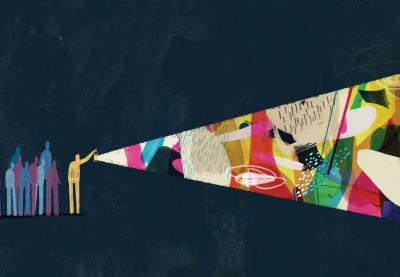Dear Future Leader,
Changing the world isn’t just about changing people’s ideas when it comes to race, gender and sexual orientation. It is about changing the way we approach bias and how we educate ourselves and others. Starting a club or group at school can be a great way to empower yourself and your peers, educate the school community and address identity-based bullying. I’ve noticed that you care about social issues, and I think you’ve got what it takes to be an effective leader.
By launching a gay-straight alliance, an anti-racism club or any kind of social justice group you might choose, you can spur productive conversations between students, teachers and administrators. This type of dialogue supports an environment where everyone is comfortable and free to learn—and it’s necessary for making real change.
Are you up for the challenge? Here are some suggestions for getting started.
Get a teacher to sponsor the group.
It is important to gain the help and support of a teacher or other faculty member in starting your group. A supportive teacher can help to bridge the gap between generations and cut through bureaucratic red tape. Additionally, this teacher can help get other educators and community members involved. A few supportive adults can access resources younger people may not be able to access alone. The key is fostering a forum for youth to create change; find an adult who is willing to nurture, not lead.
Call a meeting.
The next step will be to set up your first meeting. Main questions are: What is a meeting? What will we talk about at the meeting?
Plan to make your initial meeting something more than another boring after-school gathering. Many times, groups will get together for a first meeting and find themselves staring into each other’s faces with nothing to talk about. Plan a mixer with refreshments, music and movies. Make it interesting.
Your first meeting should be very casual and consist of the founding members establishing priorities. This initial meeting will really serve as a preview for the first large-group meeting, which will be open to everyone who’s interested and wants to get involved.
Think of ways to expand your group. How can you creatively launch the new group and recruit members from the larger school community?
Plan activities to help people get to know each other.
Start thinking of ideas for breaking the ice at the first large-group meeting. Remember, if people don’t have fun and feel comfortable, they will not come to the next meeting. What will you talk about? How will you make sure everyone feels welcome?
Think simply. Provide a clear impression of what types of issues the group plans to address. And remember to keep things light.
Plan a game that gets everyone acquainted; introduce yourselves to each other and share why you felt it was important to get involved.
Set goals for your group.
Once you have started your group and have a few core people attending your meetings, the group should set goals.
These goals should include everything from fundraising to attracting new members. Identify key issues not only in your school, but also in your community. Be creative and realistic. Additionally, your group should look at ways to use its influence as a school-sanctioned organization.
Think about sponsoring events and speakers. If you set a goal to have a great speaker talk to the whole school about an issue like race, history, gender or culture, ask the speaker to address interested members of the community that evening, too. Use the school or a local events center to host the event.
Try to include self-education in your group meetings. Create a reading list. Strive to keep learning about new issues.
Schedule events that are fun.
Plan activities that entice people to come—not because they are necessarily interested in the cause, but because the events sound fun.
Consider events like concerts, dances and presentations. Imagine an after-school event where the local high school punk band plays a show with the local hip-hop act and the whole thing is hosted by a DJ. That would be cool, right?
Introduce the group’s goals and ideas at the events. Use informational tables and fliers or an art display created by students and inspired by a recent event, a historical event or even a single word representing a theme, like unity or upstander.
People who are interested in activism and justice sometimes forget that not everyone is as passionate about their ideas as we are. Many people who are “on our side,” or could be on our side, might be uncomfortable about activism or standing up for a cause. Be creative, understanding and gentle in your approach, and be sure to include celebration and socialization as part of the group’s activism and organizing.
This may feel like a lot, but just remember: Young people can change the world, and you have adults around you who are willing to help. Thank you for your courage. I can’t wait to hear your ideas.
Sincerely,
This letter was adapted from an article written by Tad Thomas of the Positive Youth Foundation, originally published by Teaching Tolerance in 2009.

